Trail Moments | How To Long-Distance Bike Tour With (Six!) Young Kids
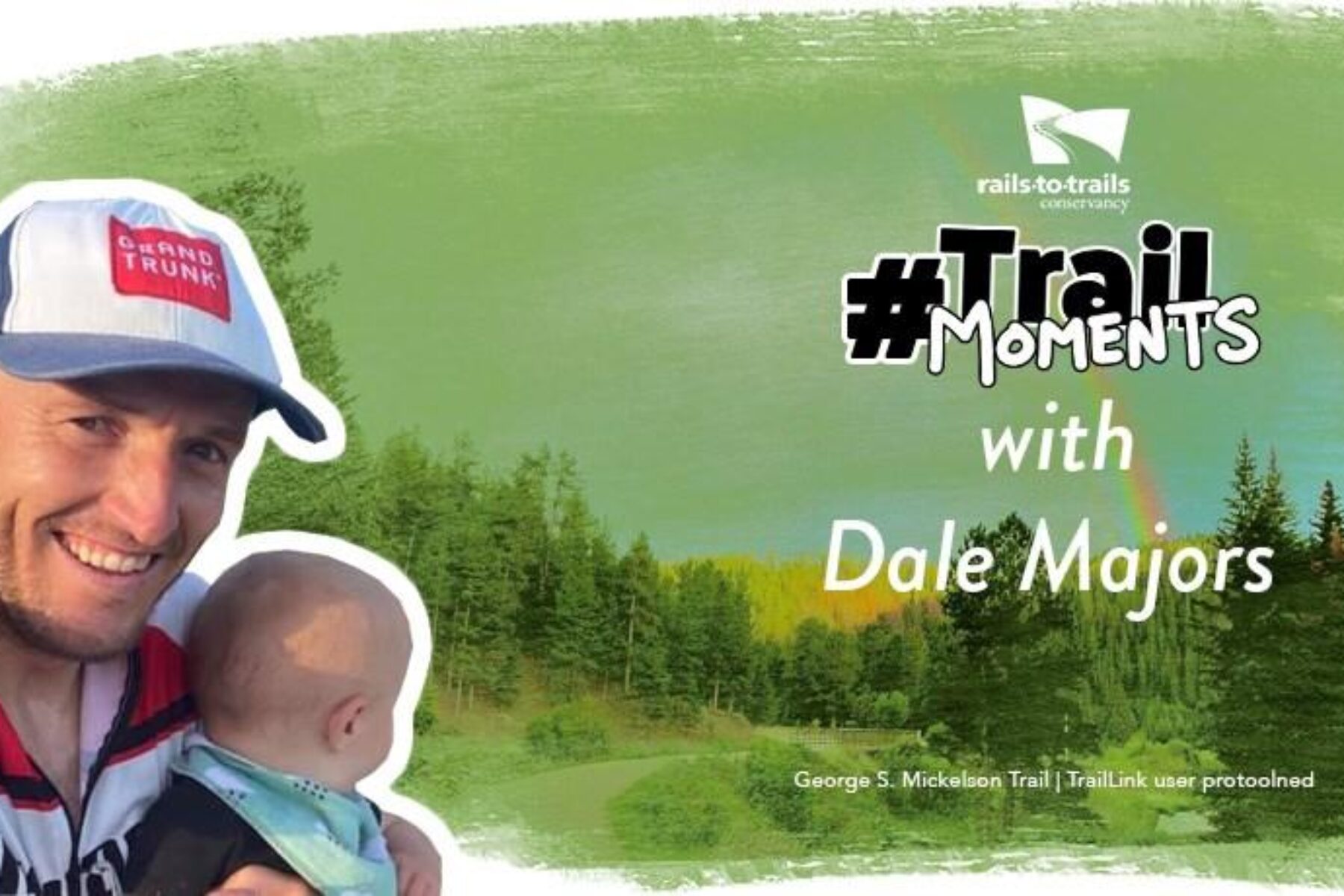
After our most recent trip of 600 miles of self-supported touring on converted rail-trail routes, our family has completed about 4,000 total miles of bike touring. As you can imagine, people think we’re quite a sight as we roll down the trail with six kids in tow.
I know it’s intimidating to plan a route that will be safe for your family while offering sufficient camping and access to other important necessities like grocery stores close to the trail. We’ve found that good rails-trail routes can be very forgiving to those new to bike touring, and a trail like the Great Allegheny Passage (gaptrail.org) could act as the perfect set of training wheels to give you a taste for bike touring.
Getting started is hard. Our first multiday tour with our 14-month-old was three days long. We didn’t pick our route well; it was too hilly and too hot. We’ve learned so much since then and wanted to share some of our hard-earned lessons to make things easier for you.
Related: How to Prepare for Your First Long-Distance Trail Ride
Understand Their Limits
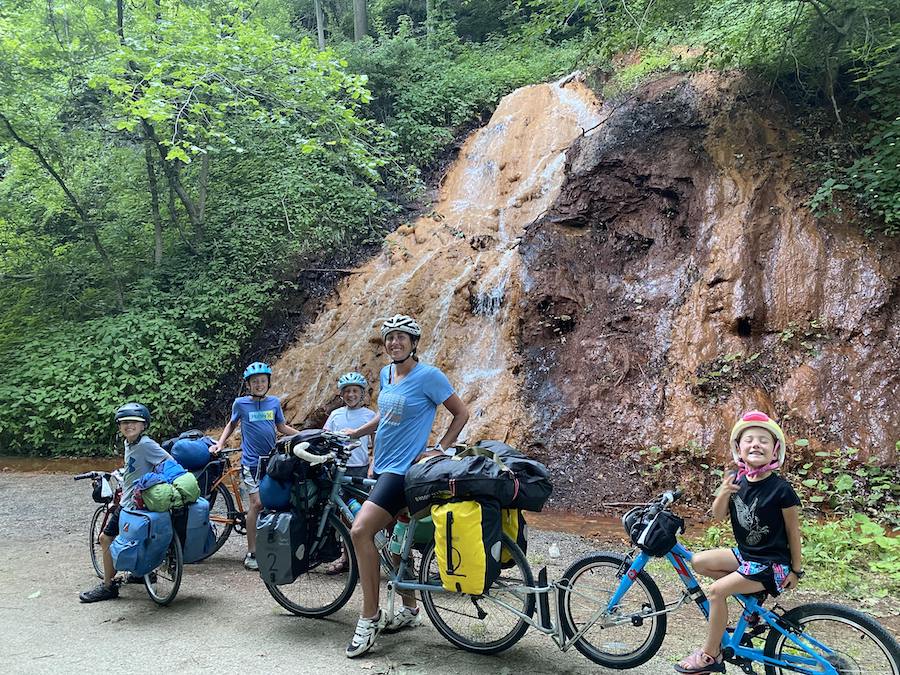
Will your kids cry? Maybe! Our 5-year-old daughter threw her bike down in protest on mile 1.5 of South Dakota’s George S. Mickelson Trail. She eventually rode 500 of our 600 miles, including a few very tough stretches. Kids are tough, but you may need to work them into the longer rides. Help them learn to cope and ride on their own without giving in too soon.
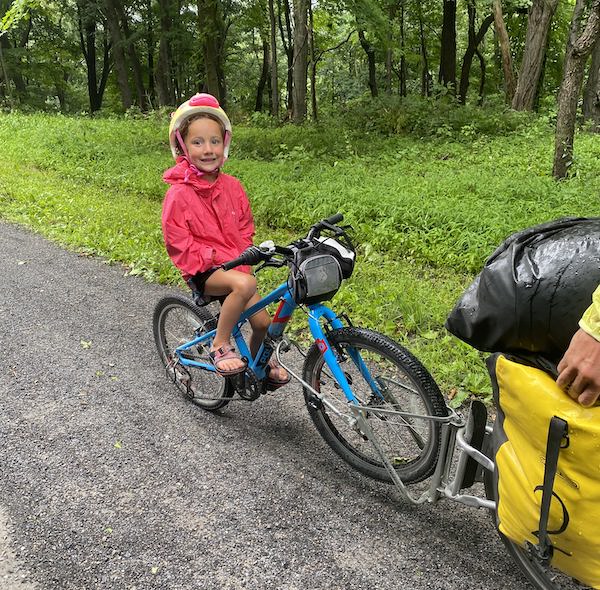
My daughter’s backup option was a FollowMe Tandem, but we didn’t have a chase vehicle for her to give up in. If we had had that option, she would have taken it. We told lots of stories, and my wife Brittany and I spent a lot of our energy on the trip encouraging kids. The older kids also did a great job of having the younger kids as “bike buddies.” This is one reason we also prefer to tour with other families that have kids of similar ages: Peer pressure and camaraderie can be an amazing thing to help kids bring their best effort to the ride.
There’s no doubt that it’s hard to cover 20–30 miles in a day with young kids. We’ve found the best way to keep rolling is to take deliberate stops with snacking and quick breaks, but avoid lots of little and random stops. Stopping at playgrounds or cool sites is a must, though. We always try to make it 5–10 miles in the morning before our first stop.
Bring Snacks—Lots of Snacks
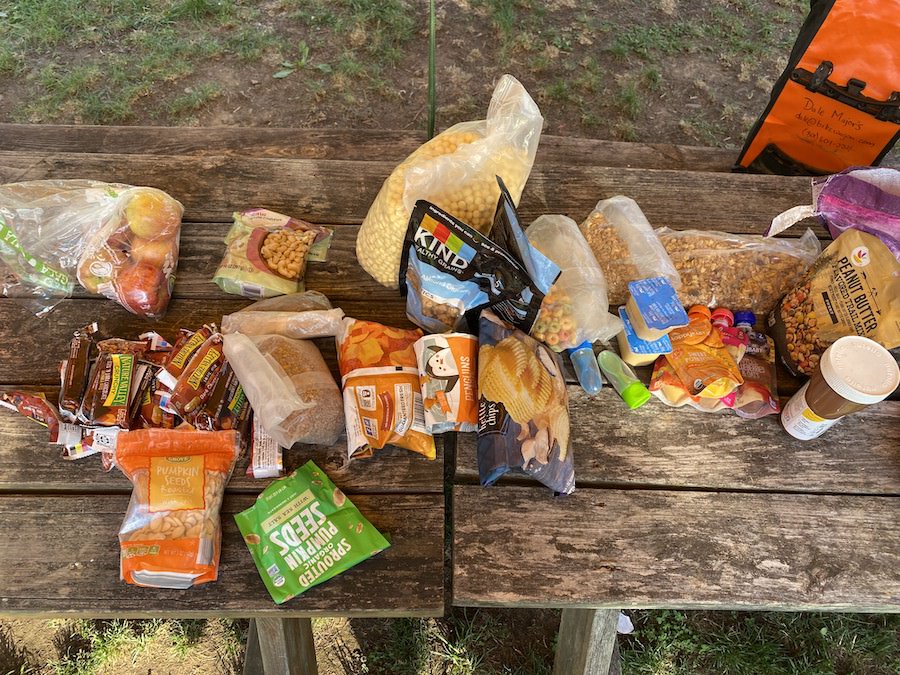
Snack often. Seriously. The No. 1 rule I have for bike touring is to stay nourished. Eat before you’re hungry and drink before you’re thirsty. Kids need reminding, but they also need good snack options and places to store their snacks. We prefer to eat lots of nuts, fresh fruit, food bars and crackers. If you get into too much of a deficit, it makes it hard to recover from being calorie deprived. Handlebar bags are a great place to store snacks that makes them easily accessible.
Access to supermarkets is helpful for a successful trip. When riding along the Loire River in France, we found ample supermarkets with fresh produce and food options, but along some of the more rural trails that we’ve ridden, those services can be hard to come by. In situations like that, set aside plenty of pannier or trailer space for food storage. We make a habit of carrying a plentiful amount of food, and it served us well along Missouri’s 240-mile Katy Trail State Park. In fact, we ate through our whole reserve!
Related: How to Plan Your First Overnight Bike Trip
Choose the Right Equipment
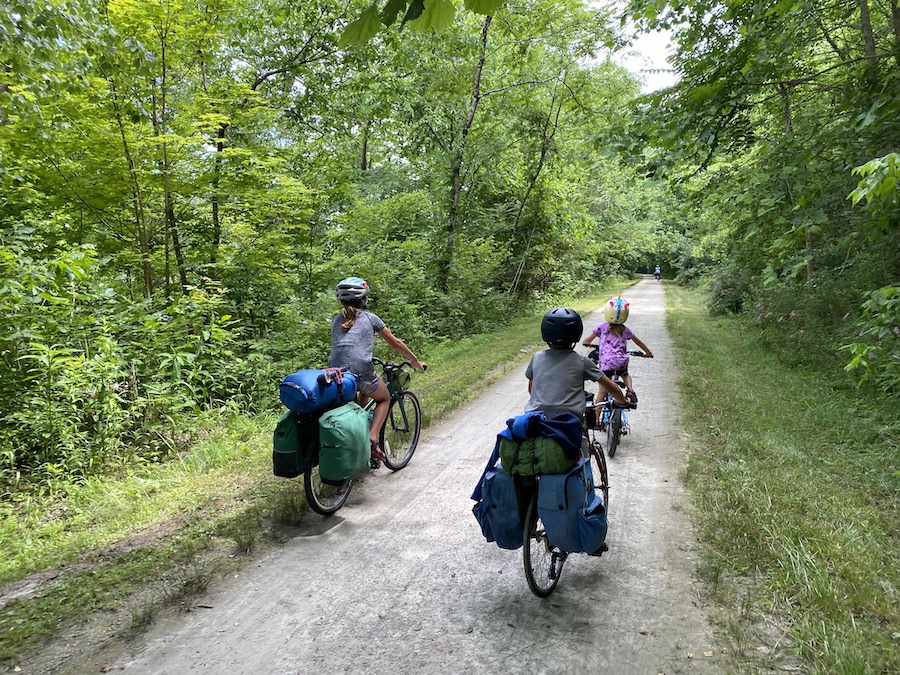
The right gear can be the difference between happy memories and misery. Everyone should have a good rain jacket and rain pants. Quick-drying clothing is great for staying comfortable. Most of our shirts and shorts are some sort of poly blend so they can dry quickly; we avoid cotton when possible. Did you know there are special infant sleeping bags? We bought one for our 8-month-old to ensure he stays warm.
For very young travelers, we love our Chariot trailer by Thule; we’ve also used a Burley, too, but we like the Thule more. Our 7-, 9- and 12-year-olds rode their own bikes, each outfitted with a rear rack and panniers. The Thule racks are great when the bike won’t easily accept a rear rack, and for small bikes you can also use the seat post racks. Our 5-year-old rode her own bike with gears, but it was also attached to a FollowMe Tandem for when she was tired. The rule was that she’d ride 20 miles on her own before she could be attached. She’d always make that distance and sometimes would finish the day on her own.
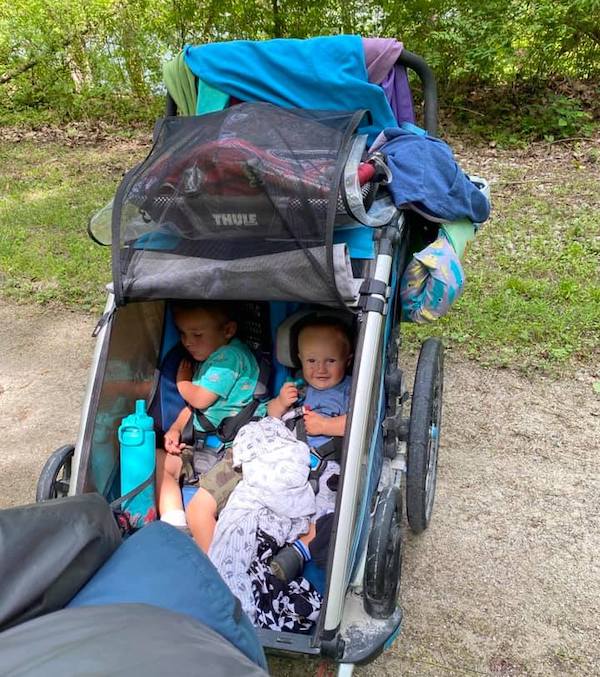
More than half of our touring mileage was racked up pulling a double Weehoo trailer (which provides two children’s seats, one behind the other), but we still prefer a double-wide trailer (two seats side-by-side) to a double Weehoo. The Weehoos can be too squirrely when riding long distances loaded down, especially when inclines are involved. We feel double-wide trailers are safer in case of the inevitable spills that occur while riding.
Related: How to Be Equipment-Ready for Your First Long-Distance Trail Ride
Set Realistic Goals (and Believe Your Kids Will Achieve Them)
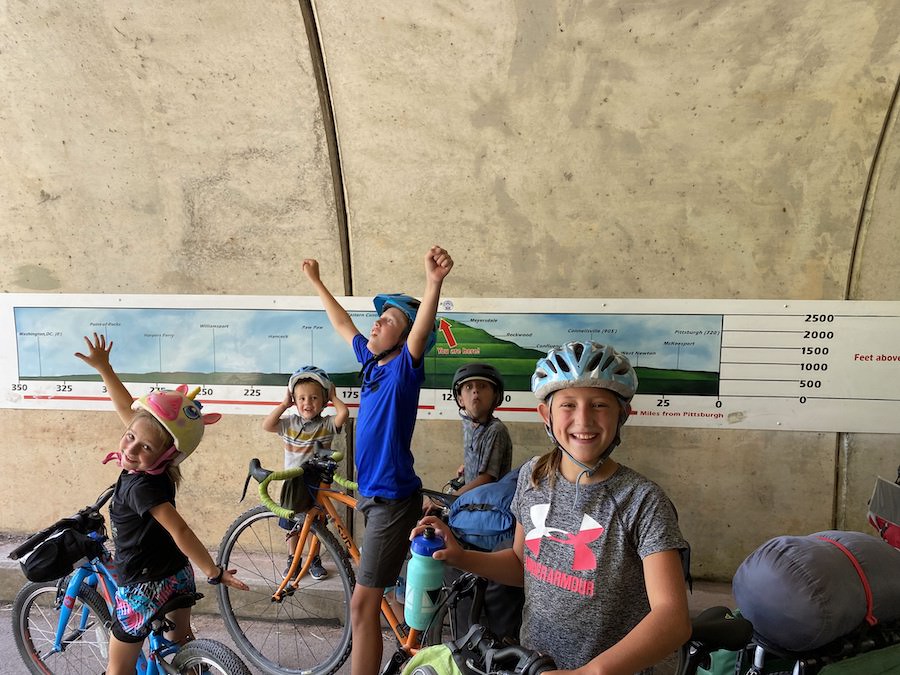
Make a clear goal for each trip that will help you gauge success. On our first trip with kids, we had the goal of making it enjoyable for our 1-, 3- and 5-year-olds. So, when faced with either a 25- or 40-mile riding option, we asked, “What would be best for the kids?” This was also used when passing playgrounds, taking rest days or deciding when to stop for a good break.
But more than any of the tactical advice given here, it’s important to believe in your kids. Believe that they’ll be able to rise up to the challenge and overcome any difficulties that you’ll encounter on the trail. They will surprise you and surprise themselves in the process.
This article is part of Rails-to-Trails Conservancy’s Trail Moments initiative—to elevate new and tried-and-true trail voices around the country, and how trails impact the lives of Americans. Learn more at trailmoments.org and #TrailMoments on social media. Share your story, or view a collection of trail moments stories.

Donate
Everyone deserves access to safe ways to walk, bike, and be active outdoors.
